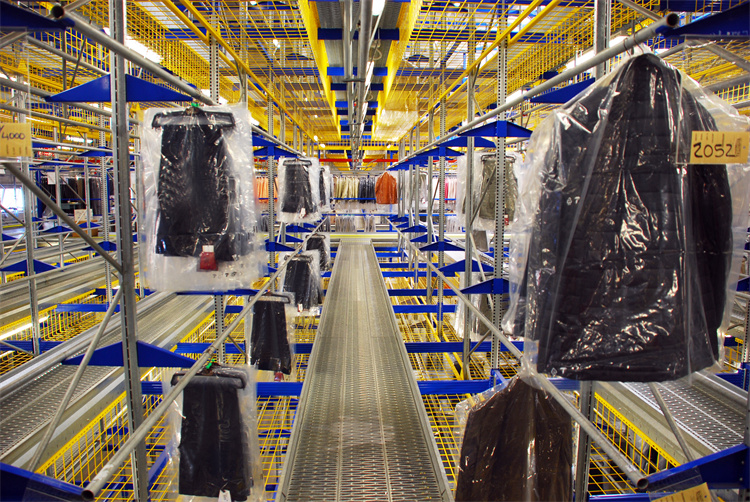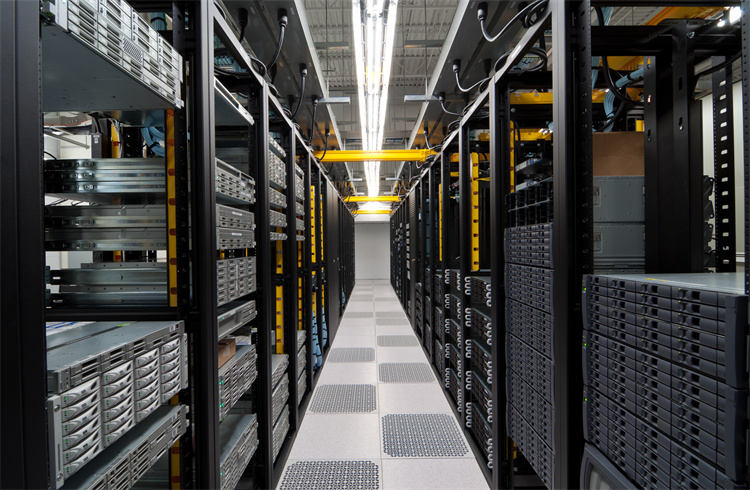Exploring Key Logistics Trends in Digital Transformation

Digital transformation plays a crucial role in revolutionizing the logistics industry. Companies increasingly adopt digital tools and technology to enhance efficiency and productivity. According to a report by McKinsey, 70% of companies have already embarked on this transformative journey. The impact of digital technology on logistics operations is profound, leading to increased optimization and speed. As the logistics sector evolves, exploring key logistics trends becomes essential to understand how these advancements shape the industry. The global market for digital transformation in logistics is projected to reach US$ 94,972.3 million by 2026, highlighting its growing significance.
The Rise of Automation in Logistics

Automation is transforming the logistics industry by enhancing efficiency and reducing costs. Companies are increasingly adopting technologies like robotics, artificial intelligence (AI), autonomous vehicles, and drones to streamline operations. These advancements not only optimize supply chain processes but also improve customer service and provide greater transparency.
Robotics and AI in Warehousing
Robotics and AI have become integral to modern warehousing. They automate repetitive tasks, allowing human workers to focus on more complex activities.
Benefits of Automation
Increased Efficiency: Robots can work around the clock without fatigue, significantly boosting productivity.
Accuracy and Precision: Automated systems reduce human error, ensuring accurate inventory management.
Cost Reduction: By minimizing labor costs and improving operational efficiency, companies can achieve substantial savings.
"Automating execution stages and improving performance across the value chain are key benefits of using big data in logistics," as highlighted in industry studies.
Challenges and Considerations
High Initial Investment: Implementing robotics and AI requires significant upfront costs.
Technical Expertise: Companies need skilled personnel to manage and maintain these advanced systems.
Integration Issues: Ensuring seamless integration with existing systems can be challenging.
Autonomous Vehicles and Drones
Autonomous vehicles and drones represent the future of logistics, offering innovative solutions for transportation and delivery.
Current Applications
Last-Mile Delivery: Drones are increasingly used for delivering packages in urban areas, reducing delivery times.
Freight Transport: Autonomous trucks are being tested for long-haul transportation, promising to revolutionize freight logistics.
Real-life examples of logistics automation demonstrate the potential of these technologies to overcome challenges and enhance efficiency.
Future Prospects
Expanded Use Cases: As technology advances, autonomous vehicles and drones will find broader applications in logistics.
Regulatory Developments: Governments are working on regulations to ensure the safe deployment of these technologies.
Environmental Impact: Autonomous vehicles and drones can contribute to sustainability by reducing emissions and fuel consumption.
The rise of automation in logistics is a testament to the industry's commitment to innovation and efficiency. By embracing these technologies, companies can stay competitive and meet the evolving demands of the market.
The Role of Big Data and Analytics
Big data and analytics have become indispensable in the logistics industry, driving significant improvements in supply chain performance. Companies leverage these technologies to gain insights, optimize operations, and enhance decision-making processes. As logistics trends continue to evolve, the role of big data technology becomes increasingly crucial in shaping the future of the industry.
Enhancing Supply Chain Visibility
Supply chain visibility is a critical aspect of modern logistics. Supply chain visibility provides companies with the tools needed to monitor and manage their supply chains effectively.
Real-time Tracking
Real-time tracking allows logistics companies to monitor shipments and inventory with precision. Technologies such as GPS and RFID enable businesses to track the exact location of goods at any given moment. This capability enhances transparency and ensures timely deliveries. By utilizing real-time data, companies can respond swiftly to any disruptions, maintaining smooth operations.
Predictive Analytics
Predictive analytics plays a pivotal role in anticipating future trends and demands. By analyzing historical data, companies can forecast demand spikes and valleys, ensuring optimal stocking levels. This approach prevents overstocking or understocking, reducing waste and improving efficiency. Predictive analytics also aids in route optimization, minimizing delays and enhancing delivery performance.
"Big data analytics provide actionable insights into supply chain performance, enabling better decision-making and predictive maintenance," as highlighted in industry studies.
Data-Driven Decision Making
Data-driven decision-making empowers logistics companies to make informed choices that enhance operational efficiency and mitigate risks.
Optimizing Operations
Big data analytics enables companies to optimize their operations by identifying inefficiencies and areas for improvement. By analyzing data from various sources, businesses can streamline processes, reduce costs, and improve service quality. This approach leads to innovative solutions for complex logistics challenges, enhancing overall performance.
Risk Management
Effective risk management is essential in the logistics industry. Big data analytics helps companies identify potential risks and develop strategies to mitigate them. By analyzing data patterns, businesses can anticipate disruptions and implement preventive measures. This proactive approach minimizes the impact of unforeseen events, ensuring continuity and reliability in logistics operations.
"Using Big Data in logistics can result in improved efficiency, cost savings, enhanced customer service, and better decision making," according to research findings.
The integration of big data and analytics in logistics is transforming the industry, offering new opportunities for growth and innovation. As logistics trends continue to evolve, companies that embrace these technologies will gain a competitive edge, driving success in an increasingly digital world.
The Impact of IoT on Logistics

Smart Logistics Solutions
The Internet of Things (IoT) has revolutionized logistics by introducing smart solutions that enhance efficiency and visibility. IoT-enabled systems provide real-time data, allowing companies to monitor and manage their operations with precision.
IoT-enabled tracking systems offer unparalleled visibility into the supply chain. These systems use sensors and GPS technology to provide real-time updates on the location and condition of shipments. Companies can track goods from the warehouse to the final destination, ensuring timely deliveries and reducing the risk of loss or damage. This level of transparency delights customers and enhances trust in the service provided.
IoT-enabled tracking systems offer unparalleled visibility into the supply chain. These systems use sensors and GPS technology to provide real-time updates on the location and condition of shipments. Companies can track goods from the warehouse to the final destination, ensuring timely deliveries and reducing the risk of loss or damage. This level of transparency delights customers and enhances trust in the service provided.
Inventory Management
IoT plays a crucial role in optimizing inventory management. Sensors monitor storage conditions, ensuring that sensitive goods remain in optimal environments. This technology minimizes spoilage and damage, leading to cost savings and improved efficiency. By providing accurate data on stock levels, IoT systems enable companies to make informed decisions about restocking and inventory allocation, reducing waste and enhancing service quality.
Connectivity and Communication
IoT enhances connectivity and communication within the logistics industry, enabling seamless integration with other technologies and addressing security concerns.
Integration with Other Technologies
IoT systems integrate effortlessly with other digital technologies, such as cloud computing and big data analytics. This integration allows for the automation of processes and the optimization of routes, reducing delays and operational risks. By combining IoT with advanced analytics, companies can make data-driven decisions that improve overall performance and customer satisfaction.
Security Concerns
While IoT offers numerous benefits, it also raises security concerns. The vast amount of data generated by IoT devices requires robust security measures to protect against cyber threats. Companies must invest in secure networks and encryption technologies to safeguard sensitive information. By addressing these concerns, businesses can fully leverage the advantages of IoT while maintaining the integrity and confidentiality of their data.
"IoT-enabled logistics solutions transform the way logistics companies operate, providing precise information on vehicle location and conditions," as noted in industry studies.
JUSDA's Approach to Sustainability and Green Logistics
JUSDA exemplifies a forward-thinking approach to sustainability in logistics. The company integrates eco-friendly practices into its operations, aligning with global standards for environmental responsibility. By doing so, JUSDA not only meets the growing demand for green logistics but also enhances efficiency and cost-effectiveness.
Eco-friendly Practices
Reducing Carbon Footprint
JUSDA actively works to reduce its carbon footprint by implementing energy-efficient solutions across its supply chain. The company prioritizes minimizing emissions and energy consumption, which leads to significant cost savings and contributes to a cleaner environment. By optimizing transportation routes and utilizing fuel-efficient vehicles, JUSDA demonstrates its commitment to sustainable logistics trends.
Sustainable Packaging
Sustainable packaging forms a crucial part of JUSDA's green logistics strategy. The company uses recyclable materials and promotes waste reduction within its supply chain. This approach not only reduces environmental impact but also showcases JUSDA's dedication to sustainability. By adopting these practices, JUSDA enhances its brand image and sets a benchmark for other companies in the industry.
Regulatory Compliance
Industry Standards
JUSDA aligns its operations with industry standards to ensure compliance with environmental regulations. The company stays updated with the latest logistics trends and adapts its practices accordingly. By adhering to these standards, JUSDA maintains its reputation as a responsible and reliable logistics provider.
Future Regulations
As the logistics industry evolves, JUSDA anticipates future regulations and prepares to meet them proactively. The company invests in research and development to stay ahead of emerging logistics trends. By doing so, JUSDA ensures that its operations remain compliant and sustainable, positioning itself as a leader in green logistics.
JUSDA's approach to sustainability and green logistics reflects its commitment to innovation and environmental responsibility. By embracing eco-friendly practices and adhering to regulatory standards, JUSDA sets a high standard for the logistics industry. As logistics trends continue to evolve, JUSDA remains dedicated to providing efficient and sustainable solutions for its clients.

JUSDA Solutions
To provide you with professional solutions and quotations.
The blog explored key logistics trends in digital transformation, highlighting automation, big data, IoT, and sustainability. These trends enhance efficiency, reduce costs, and improve customer service. Adapting to digital transformation is crucial for logistics companies to modernize outdated systems and gain a competitive edge. As the industry evolves, embracing digital tools and technology will be essential for success. The future of logistics lies in leveraging these advancements to create more efficient, transparent, and customer-focused solutions. Companies that invest in digital logistics technology will thrive in an increasingly digital world.
See Also
Paving the Way: Tomorrow's Logistics Powered by Digital Tech
Transforming Supply Chains: Innovations Shaping Logistics
Artificial Intelligence in Logistics: Shaping the Future
Innovative Logistics Technology: Exploring Future Possibilities
Ready for the Digital Shift in Supply Chain? Discover Today!
